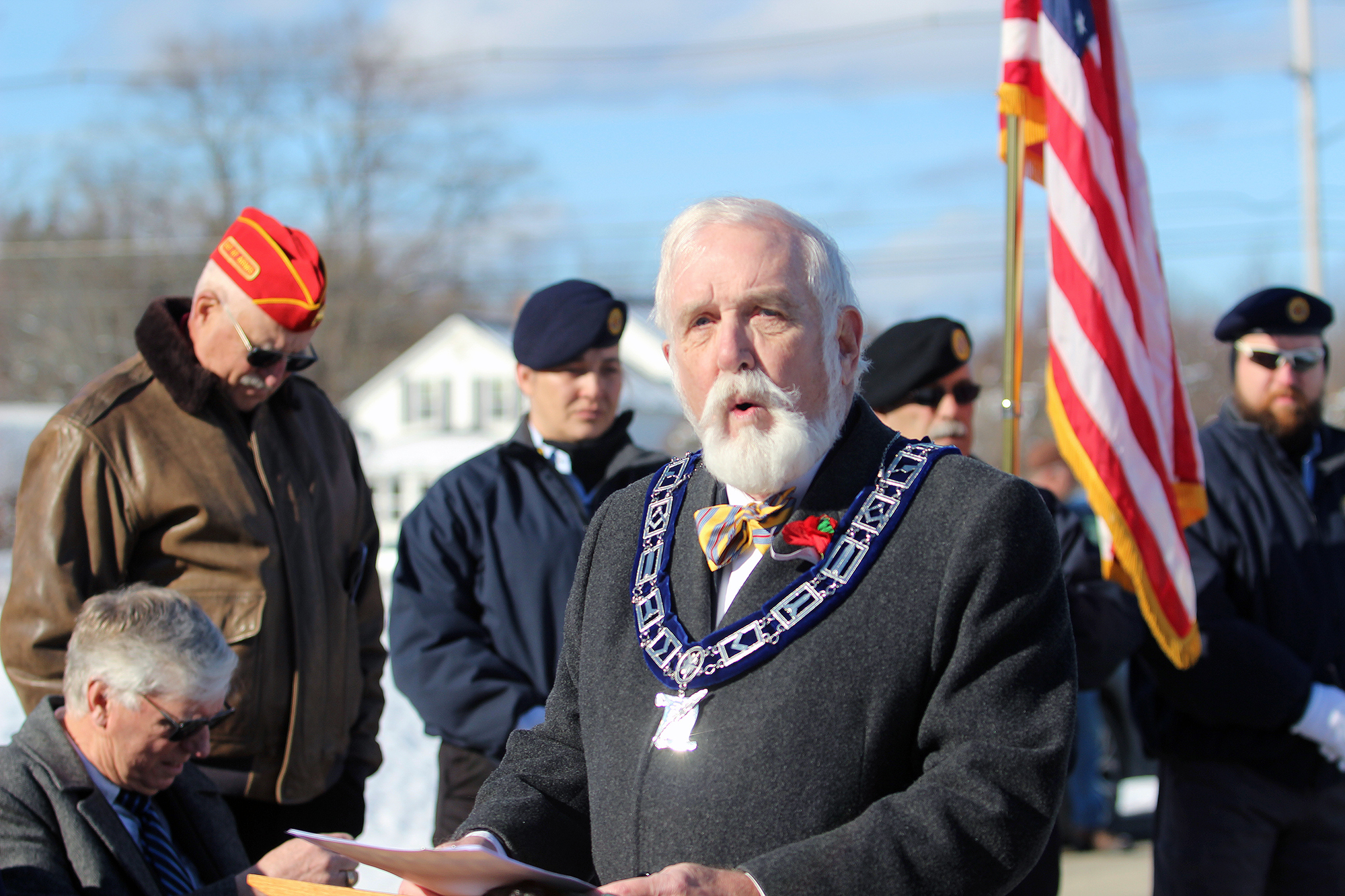
HOULTON, Maine — The men stationed at Hancock Barracks in Houlton in the 1800s were fortunate they did not have to engage in the battles of war.
Unfortunately, those men and their families had to endure brutal northern Maine winter weather without proper accommodations.
Those veterans were remembered Saturday with a wreath ceremony at Soldiers Cemetery, located on the White Settlement Road near the Canadian border, by members of Monument Lodge No. 96 and the Aroostook County Marine Corps League Detachment 1368.
“We wanted to have these soldiers remembered,” said Richard Rhoda, historian for Monument Lodge No. 96 in Houlton. “There were 37 soldiers who died here at Hancock Barracks between 1828 and 1844. When the troops came here, they came to nothing. They had land on the highest point in Houlton, which was also the windiest and coldest.”
Monument Lodge No. 96 has a special connection to the cemetery, which was donated to the town by its founder Joseph Houlton in 1807. In 2003, the Masons, with the assistance of U.S. Sen. Susan Collins, obtained 37 headstones for the men who had lost their lives at Hancock Barracks. Most of those deaths were from disease and not the result of battle.

Retired Maj. Bernard McMann was one of the guest speakers at a wreath laying ceremony at Soldiers Cemetery in Houlton Saturday.
(Staff Photo/Joseph Cyr)
Bernard McMann, retired major with the United States Marine Corps, delivered a poignant address prior to the placement of wreaths.
“The men commemorated here at this outstanding place of remembrance were not the kind of heroes that the History Channel showcases,” he said. “They were no different than the hundreds of thousands of men and women who over the course of our nation’s history have left the comfort of their homes to join the U.S. Military.
“These men didn’t die in battle, but they did die standing ready to fight, stationed at a post recognized as being in an area of potential danger,” he continued. “When these men were posted at Hancock Barracks, not one of them expected to spend the rest of eternity on a windswept hill in Houlton, Maine.”

Soldiers Cemetery, located on the White Settlement Road near the Canadian border in Houlton, features 37 grave markers for soldiers of Hancock Barracks. The barracks existed from 1828 to 1845.
(Staff Photo/Joseph Cyr)
McMann said those who serve are always aware of the fact that a fight would come and they may not make it home.
“We didn’t give much thought of dying before we got to the fight,” he said. “But it happens, and it happens a lot.”
Saturday’s ceremony also featured guest speakers Patricia House, field representative for Sen. Collins; Sue Tortello, Houlton town councilor; Paul Adams, Aroostook County commissioner; and Greggory Swallow, state legislator.
According to Rhoda, Hancock Barracks was first conceived in 1827 when timber trespassing was at its height and the town of Houlton was merely a plantation. Congress authorized $15,000 in May 1828 to build a road from Sunkhaze (now Milford) to Mars Hill, with a military outpost to be created in Houlton.
That road is officially known as U.S. Route 2, but in Houlton it is referred to as Military Street in honor of the military outpost.

Junior Vice Commander Charles Griffith of the Aroostook County Marine Corps League Detachment 1368 places a wreath on a snowy tombstone in Solidiers Cemetery in Houlton Saturday afternoon.
(Staff Photo/Joseph Cyr)
Five acres were purchased for $609 on top of what is now known as Drake’s Hill, as the location was the highest spot in the community. Construction was particularly difficult as much of the land was located on ledge.
While the barracks was being built, soldiers had to sleep in tents during the winter, sometimes facing temperatures well below zero. The barracks took two years to complete and featured a soldier’s quarters, a hospital, officers quarters and a large parade ground all encircled by a stockade.
The men stationed at Hancock Barracks were never involved in a military skirmish.
In 1845, Hancock Barracks closed as an indirect result of the Webster-Ashburton Treaty in 1842. That treaty resolved several border issues between the United States and the British North American colonies (the region that became Canada). Many of the troops stationed there were transferred to the Mexican border.
In 1847, the post was abandoned and sold at an auction in 1873. Not much remains of the barracks today.





